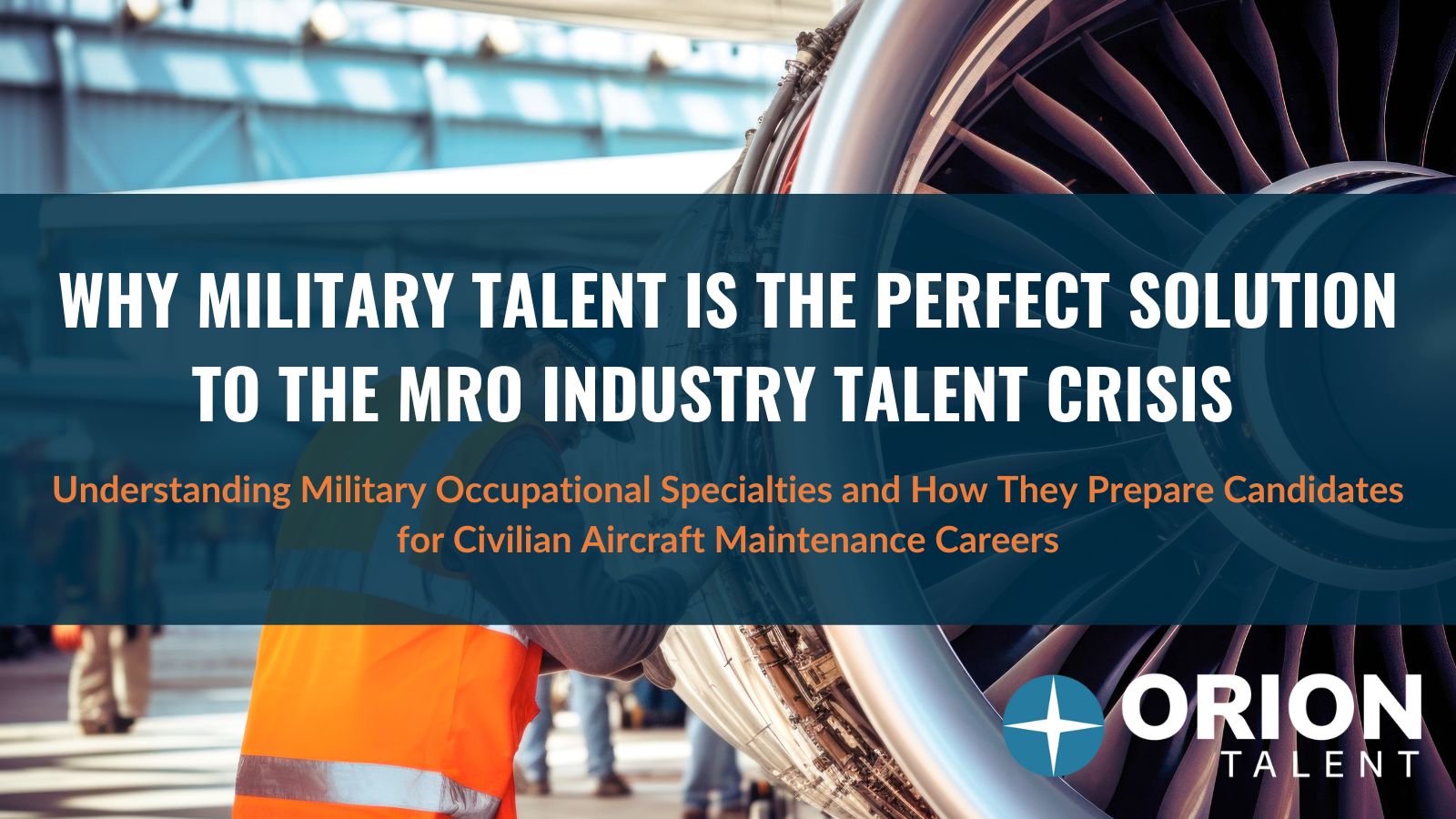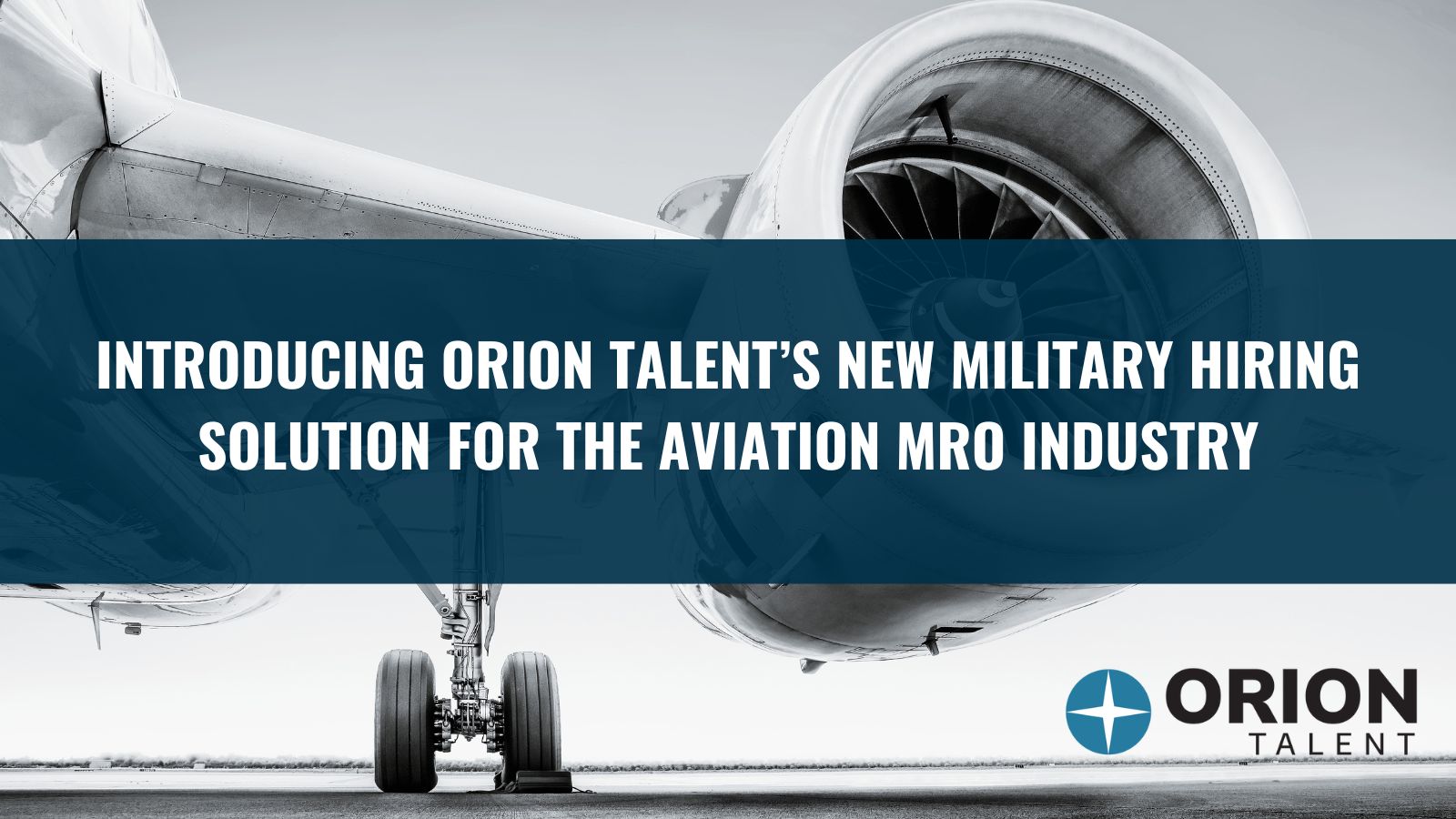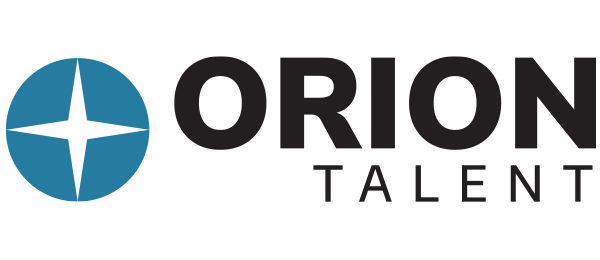
According to a recent article by MRO Business Today, the MRO industry forecast for 2024 is bright. Due to increased air travel, the industry is expecting a full recovery this year. The current global fleet size of 27,000 is expected to increase to 36,000 by 2030. In North America, the MRO market anticipates increasing investments in the aerospace industry, growing demand for lightweight, fuel-efficient aircraft engines, advancements in aircraft engine technology, a rising demand for low-cost carriers, and an expansion of airline networks.
Aircraft Maintenance Technicians play a vital role in keeping the fleet safe and ready for flight, and the industry’s skilled labor shortage presents a serious challenge to this projected growth. The Aviation Technician Education Council (ATEC) predicts that the U.S. Aircraft Mechanic pipeline will need to increase by at least 20% in order to meet projected workforce demand. Talent pipeline development is a top priority for the MRO industry.
Military Talent is the Perfect Solution to the MRO Talent Crisis
The military is an excellent source of Aircraft Mechanics. With 200,000 service members exiting the military annually and approximately 100,000 Active Duty service members currently possessing the necessary skills and experience for FAA certification, there’s a huge opportunity to close the talent gap by funneling those with aircraft maintenance experience into MRO careers.
No matter the branch of service, military aircraft mechanics, technicians, and specialists receive extensive hands-on experience and advanced technical training that makes them an ideal fit for MRO roles. In addition, veterans bring many valuable soft skills to the workforce too, including the ability to follow standards and processes, a strong work ethic, being on time, completing mission-oriented work, leadership skills, and the ability to handle stressful situations.
Yet understanding how a specific Military Occupational Specialty (MOS) translates to civilian aviation mechanic experience can be confusing if you’re unfamiliar with military lingo. Let’s explore some common Military Occupational Specialties in the aviation maintenance realm that lend themselves neatly to civilian roles. This list is certainly not comprehensive, but it’ll give you a little more understanding of what these job titles mean and how they equip candidates for success in the MRO industry:
Navy Aviation Structural Mechanic or Aviation Electronics Technician
Aviation Structural Mechanics keep a close eye on every system and piece of equipment on a variety of aircraft, performing daily preflight, postflight, and other types of inspections. They receive training in basic aviation structural mechanics, aviation theory, and relevant schools after initial training, and return to school for specialized training on new equipment or aircraft whenever necessary. Aviation Structural Mechanics learn to maintain and repair onboard systems, landing gears, breaks, and more. They learn to inspect and replace hydraulic system components, assemble metal components to make repairs to aircraft exteriors, and repair aircraft fuselage, wings, airfoils, seats, wheels, tires, controls and mechanisms, and more.
Aviation Electronics Technicians play a vital role in maintaining all aviation electronic systems. They perform intermediate-level maintenance and must learn to understand, troubleshoot, and repair complex electronics components, from navigation to radar, tactical displays to warfare sensors, so that missions can be successful. They master digital computers, fiber optics, radar laser electronics, navigation, infrared detection, pressure indication, electrical power generation and distribution systems, and much more.
Marine Corps Aircraft Maintenance (Fields 60/61/62)
In the Marine Corps, the aviation occupational field is known as the 6000 field, and the first two numbers designate the primary position of mechanic (60), helicopters (61), and fixed-wing aircraft (62). Marines in this field start as basic aircraft maintenance crew. Then, they can progress into a specific aviation occupation and earn the qualification of enlisted crew chief or aerial observer aboard various types of aircraft. Some types of roles a Marine could pursue within Aircraft Maintenance include Flight Equipment Marine, Aircraft Airframe Merch-Structure, Cryogenics Equipment Officer, Helicopter Mechanic, Helicopter Dynamic Components Mechanic, Aircraft Airframe Mechanic- Structure, Aviation Safety Equipment Mechanic, and more.
Flight Equipment Technicians inspect, maintain, and repair parachutes, flight survival equipment, flight equipment, and carbon dioxide and gaseous and liquid oxygen equipment. The flight equipment section of an aircraft squadron plays a vital role in ensuring that pilots have all necessary emergency equipment, that it fits properly, and that it’s in working condition. This article details the important roles these technicians play in ensuring pilot emergency survival.
Aircraft Maintenance (Rotary Wing) Mechanics inspect, maintain, test, and repair helicopter/ tiltrotor airframe and airframe components, dynamic components, power plants, and power plant systems as well as perform duties related to flight line operations. After Enlisted Recruit Training, Marines are assigned to the operating forces for on-the-job-training. Specific training varies depending on their designated aircraft. Learn more about Aircraft Maintenance Marines here.
Air Force Aircraft Maintenance & Airframe Inspection and Maintenance
The Air Force relies on a vast network of specialized mechanics to keep their aircraft up to standards, so there are many varieties of Aircraft Maintenance roles, including Aircraft Electrical and Environmental Systems, Aircraft Fuel systems, Aircraft Hydraulic Systems, Airlift / Special Mission Aircraft Maintenance, Helicopter / Tiltrotor Aircraft Maintenance, Refuel / Bomber Aircraft Maintenance, Remotely Piloted Aircraft Maintenance, Tactical Aircraft Maintenance, Aircraft Maintenance Officer, Aerospace Propulsion, or Advanced Fighter Aircraft Integrated Avionics. In the Airframe Inspection and Maintenance category, airmen can specialize in Aircraft Metals Technology, Aircraft Structural Maintenance, Aircrew Egress Systems, Nondestructive Inspection, and Low Observable Aircraft Structural Maintenance.
An Aerospace Propulsion Specialist must complete Basic Military Training followed by the appropriate aerospace propulsion maintenance courses for their specialty at Tech School. These specialists are responsible for ensuring Air Force planes are in first-rate operational conditions and learn how to plan, organize, & direct aerospace propulsion maintenance activities, diagnose engine problems, remove defective components & and install serviceable machinery, supervise test runs on repaired engines, and analyze and recommend maintenance actions based on needs.
An Aircraft Structural Maintenance Specialist repairs physical damage to maintain the high-quality structures of Air Force aircraft and get them back in the air. They must complete Basic Training and Tech School. Aircraft Structural Maintenance Specialists learn to assess damage to aircraft and structural components and repair or replace necessary parts, ensure all repairs are pressure-, fluid-, and weather-tight, operate and maintain powered and non-powered tools and equipment, remove corrosion by using various chemical and mechanical methods, form maintenance plans and policies to meet unit tasking, and more.
Coast Guard Aviation Maintenance Technician (AMT)
Coast Guard AMTs inspect, maintain, troubleshoot, and repair aircraft mechanical systems including the engines, powertrains, and hydraulics and service the structural parts of the aircraft as well. They receive 20 weeks of blended on-the-job training at a Coast Guard Air Station and in-class training at the Aviation Technical Training Center, where they learn about aircraft systems, metal work, composite repair, electrical theory and troubleshooting, and paint applications. There are also advanced training opportunities for composite repair, aircraft systems, airframe specific training, helicopter rescue operations, and more. AMTs are experts at aircraft mechanical repair, aircraft structural repair, and aircrew flight operations.
Bridging the Gap Between Military and Civilian MRO Careers
The MRO industry has taken note of the immense value military aircraft technicians offer and is in fierce competition for transitioning military veteran talent. MRO providers are offering signing bonuses and desirable perk packages for veterans and launching initiatives to attract military talent.
Fortunately, you don’t need to build a military talent program from the ground up. Utilizing Orion Talent’s Military Hiring Solutions for the Aviation MRO Industry, MRO clients work closely with Orion to build a talent pipeline of military Aviation Technicians before they leave the service, ensuring a steady stream of qualified candidates for their organization. Orion Talent is working diligently to funnel more military Aviation Technicians into the civilian MRO industry and close the talent gap while helping clients fill their open positions.
Orion Talent's specialized team of Military Aerospace Recruiters assist candidates from the above Military Occupational Specialties and many more in documenting their experience, obtaining necessary signatures, and applying for FAA certification while still on Active Duty. This unique approach ensures that Military Aviation Mechanics are FAA eligible upon leaving the military, streamlining the testing and examination phase for their Airframe & Powerplant (A&P) License.
Military talent is the perfect solution to the MRO Industry talent crisis, and Orion Talent is proud to help bridge the gap between military and civilian MRO careers. Better understanding how military occupations translate into your workplace and actively recruiting the right veteran talent for your organization will help you fill your open roles and prepare for expected industry growth. Orion’s Military Hiring Solutions for the Aviation MRO Industry helps you take that a step further, positioning your company as a leader in the MRO industry and building a sustainable pipeline of highly sought-after military Aviation Mechanic talent. Visit Orion Talent to learn more, and to connect with our Aerospace Recruitment team today.
Archives
- March 2024
- February 2024
- January 2024
- December 2023
- November 2023
- October 2023
- September 2023
- August 2023
- July 2023
- June 2023
- May 2023
- April 2023
- March 2023
- February 2023
- January 2023
- December 2022
- November 2022
- October 2022
- September 2022
- August 2022
- July 2022
- June 2022
- May 2022
- April 2022
- March 2022
- February 2022
- January 2022
- December 2021
- November 2021
- October 2021
- September 2021
- August 2021
- July 2021
- June 2021
- May 2021
- April 2021
- March 2021
- February 2021
- January 2021
- December 2020
- November 2020
- October 2020
- September 2020
- August 2020
- July 2020
- June 2020
- May 2020
- April 2020
- March 2020
- February 2020
- January 2020
- December 2019
- November 2019
- October 2019
- September 2019
- August 2019
- July 2019
- June 2019
- May 2019
- April 2019
- March 2019
- February 2019
- January 2019
- December 2018
- November 2018
- October 2018
- September 2018
- August 2018
- July 2018
- June 2018
- May 2018
- April 2018
- March 2018
- February 2018
- January 2018
- December 2017
- November 2017
- October 2017
- September 2017
- August 2017
- July 2017
- June 2017
- May 2017
- March 2017
- February 2017
- January 2017
 RSS Feed
RSS Feed
Subscribe to Orion's Blog
Featured Blogs




.jpg)



















